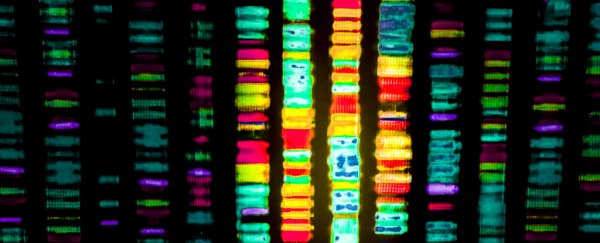A very select group of scientists, lawyers, and industry leaders just met at Harvard Medical School in Boston to contemplate building an entirely synthetic human genome. That means figuring out which chemicals are needed to create the 3 billion bases of DNA that sit inside the 23 pairs of chromosomes found inside every cell nucleus in our body.
Journalists were barred from the meeting, and participants were not allowed to tweet during the proceedings - both of which have raised suspicions that the ethical considerations involved in such a project are being overlooked.
The proposed project has been described as an 'unofficial' follow-up to the Human Genome Project, which saw thousands of scientists around the world read and record the entire sequence of the human genome. The largest international collaboration ever undertaken in biology, the project ran for 13 years, finally completing the human genome on 13 April 2003.
Now, scientists want to do the whole thing again, but this time they're not reading the human genome - they're writing it.
The project, called HGP-Write: Testing Large Synthetic Genomes in Cells, aims to "synthesise a complete human genome in a cell line within a period of 10 years" - which means replacing the natural genome in a human cell with an entirely synthetic one.
Of course, a closed-door meeting about cooking up the blueprint of life in a petri dish was always going to raise suspicions, with the possibility of using synthetic human genomes to build Bourne-style super soldiers and countless Einstein or Leonardo da Vinci clones in the future being not entirely outside the realm of possibility.
"Would it be OK, for example, to sequence and then synthesise Einstein's genome?" Laurie Zoloth, a bioethicist at Northwestern University, and Drew Endy, a bioengineer at Stanford University, wrote in an essay for COSMOS Magazine criticising the nascent project. "If so, how many Einstein genomes should be made and installed in cells, and who would get to make them?"
Unlike conventional cloning, which requires source DNA from the 'original' organism - think Dolly the sheep - creating a clone from synthetic DNA would require no natural source. You'd just need to cook up the right chemical cocktail based on the original recipe.
Endy was invited to the meeting, but declined amid concerns that it was not open to enough people. "Discussions to synthesise, for the first time, a human genome should not occur in closed rooms," he and Zoloth concluded.
Harvard geneticist George Church, one of the organisers of the meeting, told Andrew Pollack at The New York Times there had been a misunderstanding about the intent of the proposed project, saying it's aimed at creating synthetic cells, not humans, and would span many lifeforms, including all kinds of animals, plants, and microbes.
"They're painting a picture which I don't think represents the project," he said, adding that the meeting was closed off and attendees were told not to tweet because the organisers had submitted a paper to a scientific journal outlining the project, and weren't supposed to discuss it publicly while it was undergoing the peer-review process.
"He and other organisers said ethical aspects have been amply discussed since the beginning," The Times reports.
The project has not yet been funded, but Church and his team have approached various companies, foundations, and the US government to ask for support.
If they do raise the capital to launch this thing, they've got a tough road ahead, because even though it took more than a decade to get right, reading DNA is a whole lot easier than actually writing it.
"Right now, synthesising DNA is difficult and error-prone. Existing techniques can reliably make strands that are only about 200 base pairs long, with the base pairs being the chemical units in DNA. A single gene can be hundreds or thousands of base pairs long. To synthesise one of those, multiple 200-unit segments have to be spliced together."
But considering the cost of synthesising genes has gone from $4 per base pair in 2003 to just 3 cents today, we could see the entire 3 billion base pairs that make up the human genome drop to as low as US$100,000 in just two decades, say Endy and Zoloth - but only if the industry demand is strong enough.
If the project is a success, all that genetic 'tweaking' that we're seeing from the new and much-touted CRISPR/Cas9 gene editing method, which scientists have recently used to modifiy human embryos, create yeast that produces insulin, and edit HIV out of human cells (it later returned) could be obsolete - instead of tweaking what nature made, we could just build it ourselves.
So where does everything stand right now? With little information coming out of the 12 May meeting, all we can do is sit tight and wait for that peer-reviewed proposal to be made public, so we can see for ourselves exactly what was discussed.
Whether or not the ethical considerations will be given due consideration in the future is anyone's guess, but at this stage, it's more likely than not that this project will go ahead, so get ready for it. The results could be awesome - we just have to make sure the ethical issues are given as much consideration as the business opportunities.
